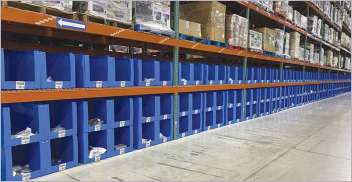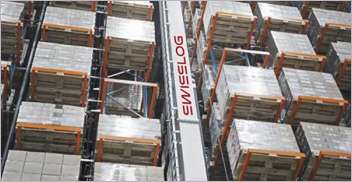When it comes to determining the best locales for shippers and 3PLs, and other concerns, to establish a warehousing presence, recent research from commercial real estate firm JLL clearly indicates that some markets are better than others.
In its research, entitled “The top ten markets at a glance: the link between industrial real estate and population growth,” JLL clearly answers a question—“where are people moving and is the logistics market keeping pace?”
JLL called the Sunbelt region, which is comprised of markets such as Texas, southern California’s Inland Empire, and Atlanta, and are a “clear” winner in attracting domestic and international migration, as evidenced by a cumulative 10% gain in industrial market size in these regions since 2015.
JLL defines regions where there is still warehouse and buildable land available for development as “hot spots.”
On the other end, though, there are other markets, including Los Angeles, New Jersey, and South Florida, which JLL notes are major population hubs and land constraint coastal markets that are facing the challenges of near all—time high rents, pricier land options and a lack of rapidly available buildable land. These factors, said JLL, have resulted in slower inventory growth for these markets in recent years.
This subsequently results in developers being more creative in regards to land usage and investment and construction in new multistory warehouses to accommodate demand, it said.
On a percentage basis, population growth projections from 2017-2022 for U.S. warehousing markets, according to JLL include: Houston at 11.1%; Dallas at 8%; Atlanta at 5.8%; Seattle at 5.2%, Los Angeles at 4.7%, Inland Empire at 4.3%, New Jersey at 4%; South Florida at 3.6%; Eastern & Central Pennsylvania at 3.4%; and Chicago at 2.9%.
One of the biggest takeaways of this research, according to Gillam Campbell, JLL research manager for industrial property sector is the growth estimates in Texas.
“Houston and Dallas are already huge population centers…with so much more growth projected there,” she said. “This makes for great opportunities for new investing. The trend of population migration in the U.S. to Sunbelt areas is really apparent [in Texas].”
JLL highlighted how warehouse development near large population hubs is viewed as a key strategy in meeting customer demand for same- or next-day delivery. And it added that having a presence in those aforementioned markets is key on that front.
“In terms of same- and next-day delivery, you are hitting on a lot of these big population markets that are also very population dense,” said Aaron Ahlburn, JLL industrial research director. “This is especially true in the New York-New Jersey area, Southern California, and Atlanta, Houston, Dallas, south Florida and Seattle. It speaks well to population growth and that growing markets and also very population-dense markets that will continue to attract demand for last-mile and urban in-fill type of real estate.”
This is something that has been prevalent in recent years and is still emerging, he noted. And he said many companies are still trying to figure out what their same-day and next-day strategies look like and are testing various strategies in relation to what is changing demand in terms of delivery.
While there is a major focus on the top ten U.S. markets for warehouse development, JLL’s Campbell said there are opportunities for additional growth in those markets, as well as smaller, less populated markets, too, but not to the same degree.
Ahlburn agreed, adding that when looking at urbanization across America, JLL is seeing not only Tier 1 cities but also secondary and tertiary cities continuing to see population growth, in tandem with job growth and millennial population growth.
“This speaks well to what you are seeing in industrial real estate,” he said.








